Enter the world at an altitude of 3,026m - the charm of Mount Norikura and the Norikura Skyline

Gifu Prefecture is in the center of Japan. Hida Takayama, located in the north, is a popular tourist destination with many things to see, including the surrounding area. We will introduce Mount Norikura, which is 3,026 meters above sea level and located in Hida Takayama. Mount Norikura, which can be accessed by bus on the Norikura Prefectural Road, is a popular mountain where even beginners can easily experience climbing a 3,000m peak. Located at the southernmost tip of the Northern Alps (Hida M...
-
Table of Contents
- The charm of Mount Norikura, located in Hida Takayama
- Mount Norikura is a treasure trove of alpine plants and wildlife
- 3,026m above sea level, but easy to access
- There are many ways to enjoy the mountain depending on your climbing level.
- Get a goshuin stamp at Norikura Hongu
- Stay overnight at Mt. Norikura
- More about Mount Norikura
- Access to Mount Norikura
- Access to Hida Takayama
- If you want to know more about Hida Takayama
The charm of Mount Norikura, located in Hida Takayama
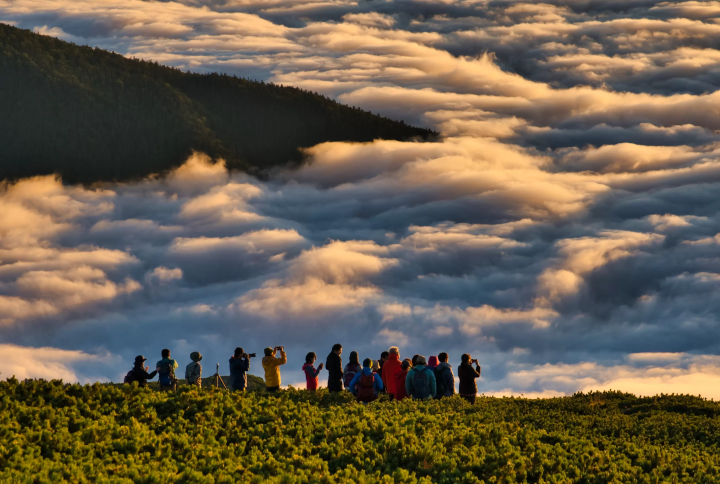
Gifu Prefecture is located in the center of Japan. Hida Takayama, located in the northern part of the prefecture, is a popular tourist destination with many sights to see, including the surrounding area. We would like to introduce you to Mount Norikura, located in Hida Takayama, which has an elevation of 3,026m.
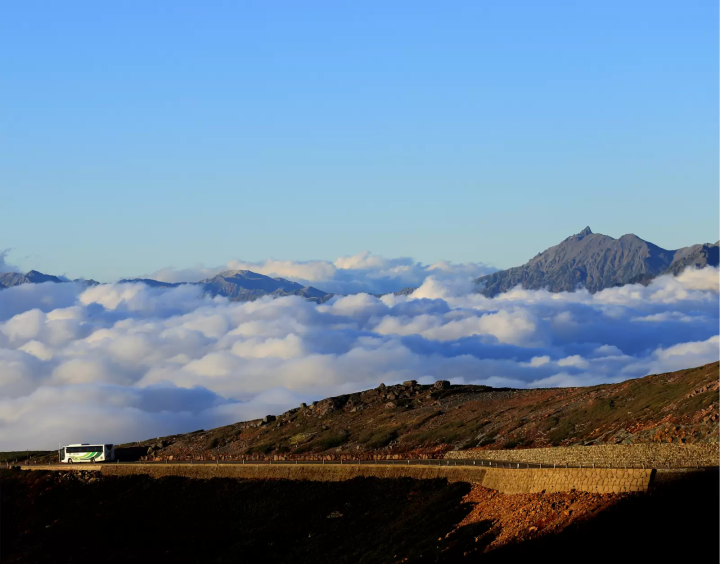
For those familiar with mountaineering in Japan, mountains over 3,000m in altitude give the impression of being mountains for advanced climbers, requiring advanced climbing skills. Mt. Norikura is one of the so-called "3,000m peaks." For that reason, it is often thought of as a sacred area where only experienced mountaineers are allowed to enter, but in fact this is not the case. Mt. Norikura, which can be accessed by bus via the prefectural road Norikura Line, affectionately known as the "Norikura Skyline," is a popular place where even beginners can easily experience climbing a 3,000m mountain.
Mount Norikura is a treasure trove of alpine plants and wildlife

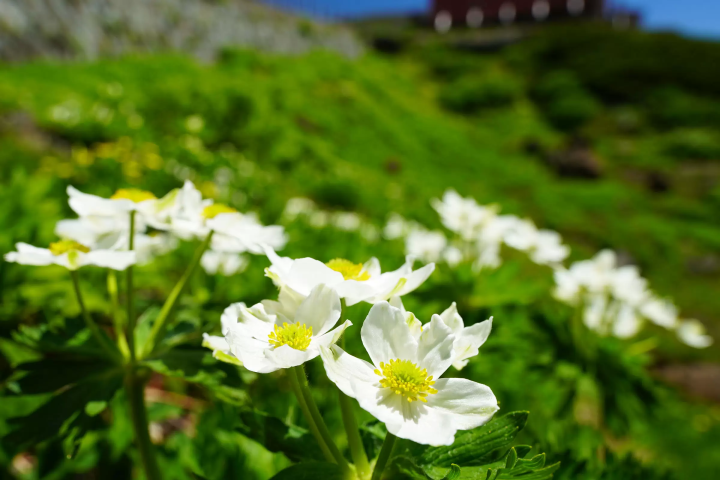
Located at the southernmost tip of the Northern Alps, Mount Norikura is one of Japan's most famous mountains, with 23 peaks, seven lakes, and eight plains, including Kengamine (3,026m). The cool mountainous region even in midsummer is a treasure trove of alpine plants and wildlife that can't be found anywhere else, and is widely known as a place that symbolizes the rich nature of Hida Takayama.
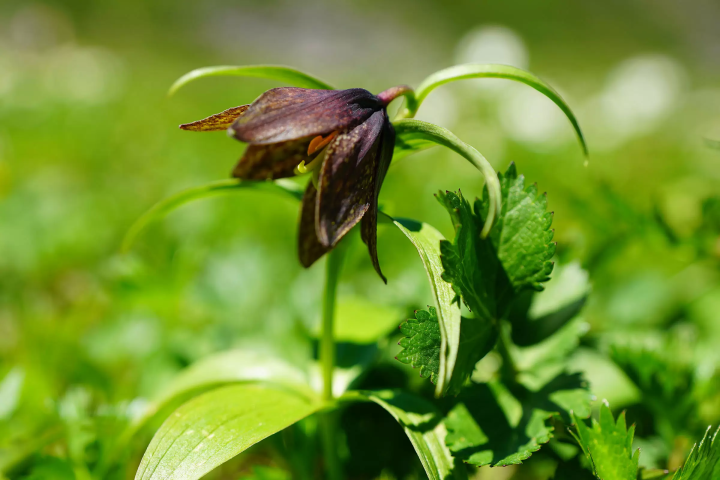
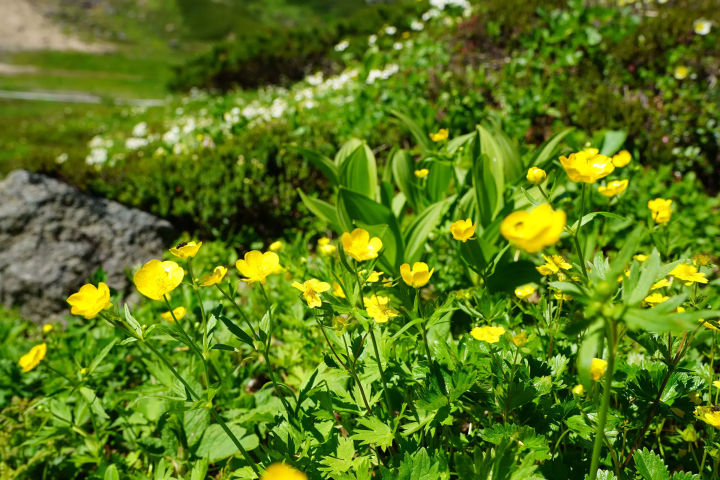
There are over 50 different kinds of flowers that can be seen depending on the season. They all start to bloom at once, especially from mid-July to mid-August. Alpine plants bloom quietly in the harsh highlands without being seen by anyone. The flowers, which are both pretty and powerful, impress those who see them.
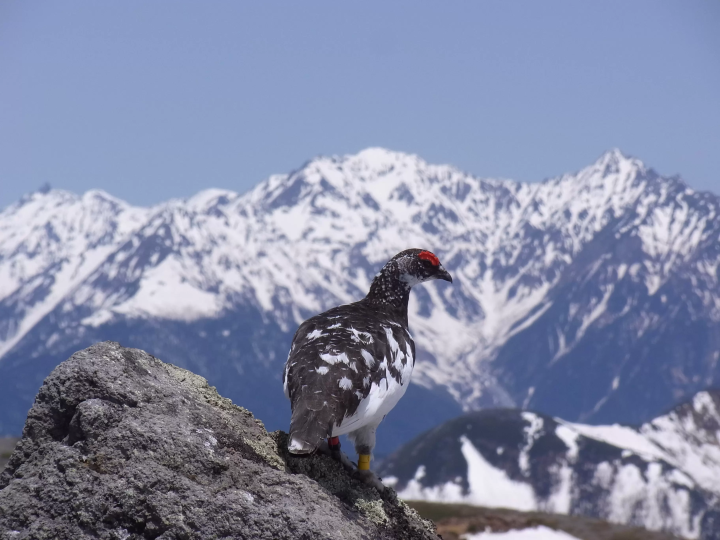
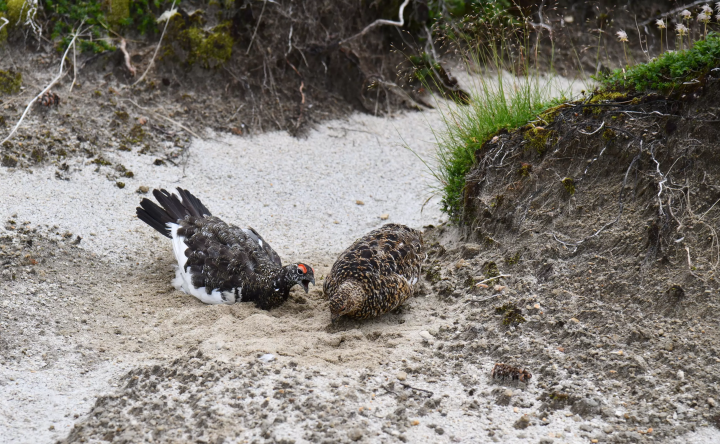
The ptarmigan, a bird famous for only being seen at high altitudes, also lives on Mt. Norikura. They often hide out of fear of predators such as martens, ermine, and foxes, but you are more likely to see them on foggy days. The numbers of ptarmigan are declining, and the Japanese government's Ministry of the Environment has designated them as a species at high risk of extinction in the wild. If you see one, keep a distance of at least 5m and watch quietly.
3,026m above sea level, but easy to access
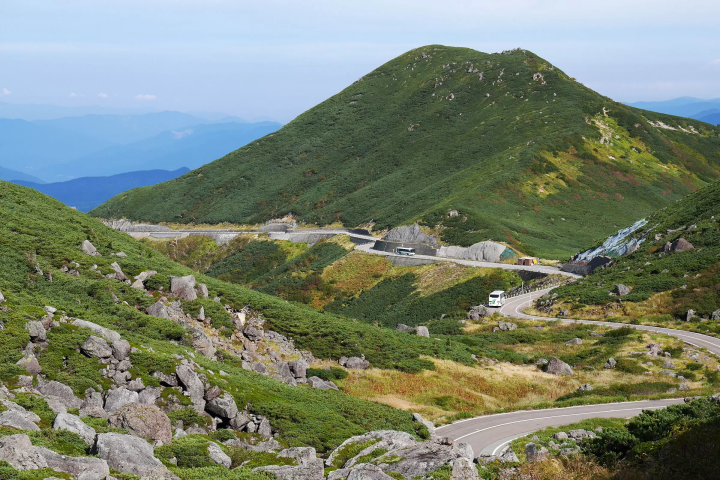
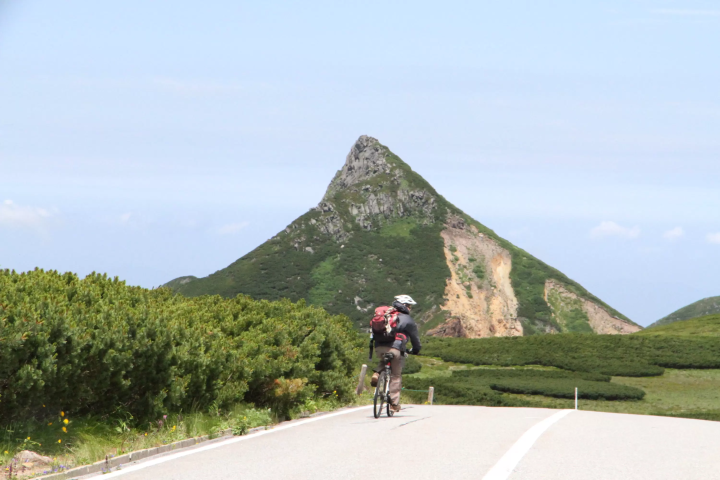
In order to protect the environment of this attractive Mt. Norikura, private vehicles are prohibited from entering the area. Only permitted vehicles such as buses and bicycles can travel on the Norikura Skyline that leads to Mt. Norikura. Looking out the window at the lush mountain forest scenery, as the altitude increases, you will surpass the tree line and the scenery will change to one of creeping pine trees growing along the ground, creating a magnificent sight.
The Norikura Skyline extends into Nagano Prefecture from the Tatamidaira Bus Terminal, changing its name to the Norikura Echoline at the prefectural border. Both the Norikura Skyline and the Norikura Echoline are the highest cycling roads in Japan, and are popular with cyclists as roads that everyone dreams of riding at least once.

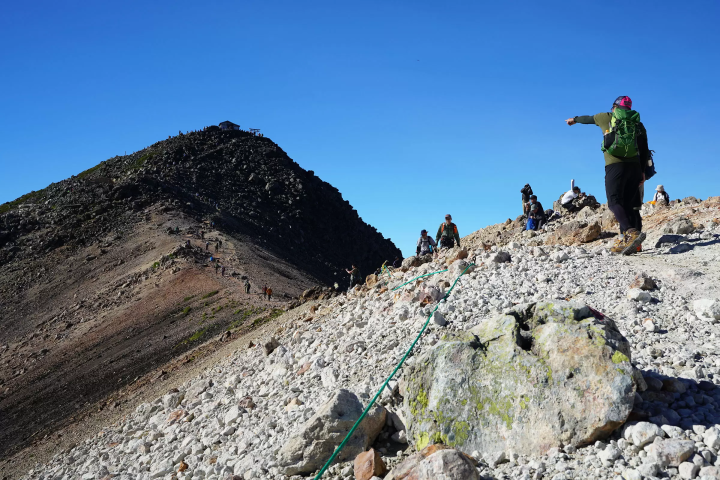
Tatamidaira Bus Terminal is at an altitude of 2,702m and is the highest bus terminal in Japan. From here, it is a 1.5 hour walk one way to Norikura-dake's highest peak, Kengamine. Of course, you need to be properly dressed for mountain climbing, but compared to other 3,000m peaks, the hurdle is lower, and even elementary school students can take on the challenge. No difficult mountain climbing skills are required.
There are many ways to enjoy the mountain depending on your climbing level.
It takes an hour and a half to reach Kengamine, the main peak of Mt. Norikura, but if you're not confident about walking that far, don't worry! There are many trekking courses that can be enjoyed in 30 minutes or less. Choose a course that suits your physical condition and the weather.
Flower Garden Course

Level: easy
Duration: 30-40 minutes
Features: A flower field with alpine plants blooming all over. The boardwalk is well maintained and easy to walk on.
Tsurugaike Course
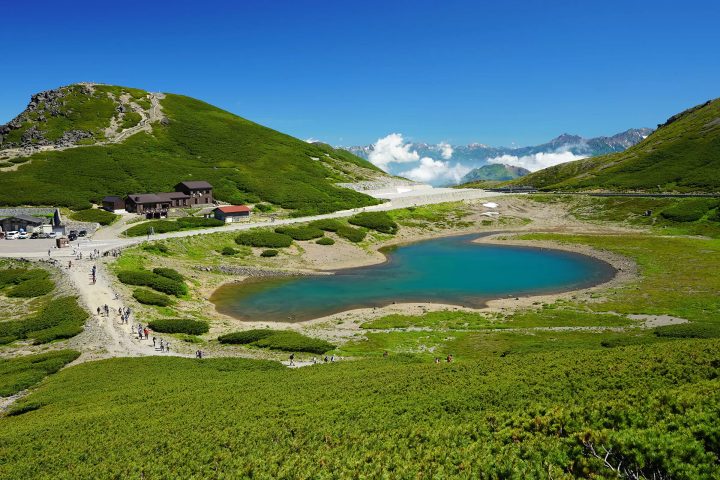
Level: easy
Duration: 30-40 minutes
Special feature: When the weather is good, the clear blue sky is reflected beautifully on the surface of the pond.
Maou-dake Course
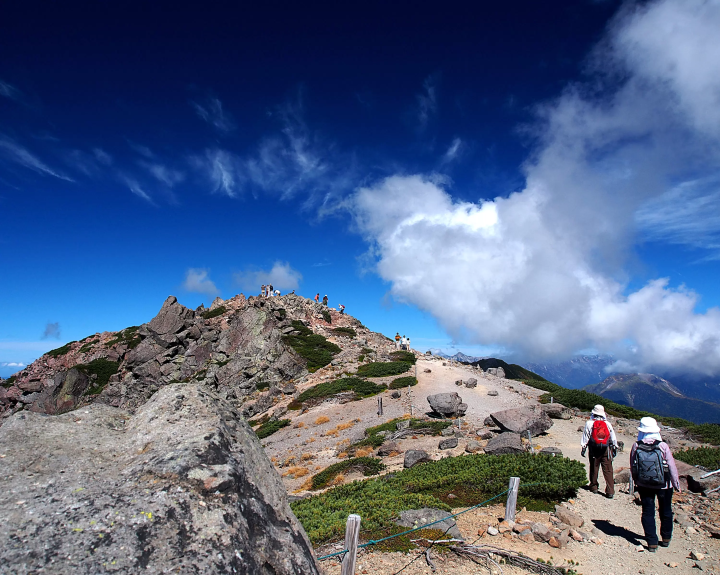
Level: easy
Duration: 30-40 minutes
Features: There are easy-to-walk stairs leading up to the summit. You can get a great view of the beautiful Northern Alps.
Mt. Daikoku Course
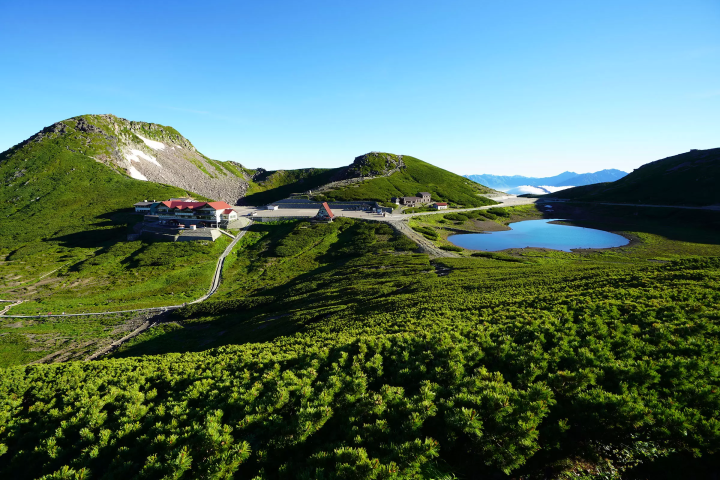
Level: Medium
Duration: 60-90 minutes
Special feature: You can get a good view of Mt. Yakedake and the Northern Alps from the summit.
Mt. Fujimi Course
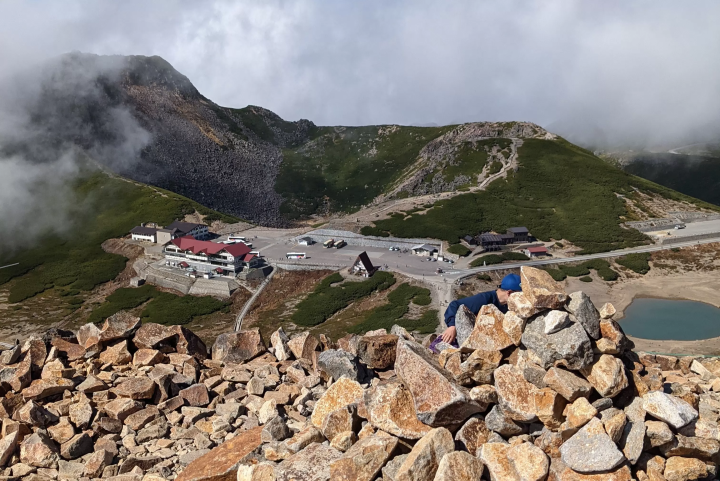
Level: Medium
Duration: 60-90 minutes
Special feature: You can get a beautiful view of the Northern Alps and Kiezugaike Pond with its remaining snowfields.
Kengamine Course

Level: hard (not difficult)
Time required: 3 hours round trip
Features: Challenge yourself to reach the main peak of Mt. Norikura! You may even be able to see Mt. Fuji in the distance.
Get a goshuin stamp at Norikura Hongu
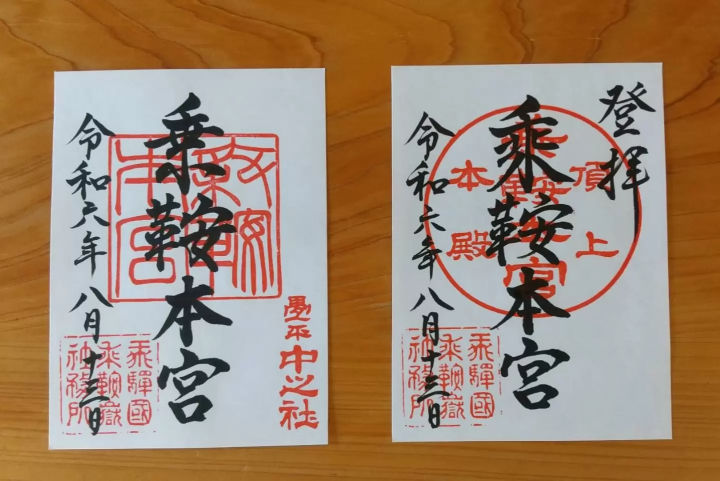
Do you know what a goshuin is? It is a piece of paper with the name of the temple or shrine written in ink and a vermilion seal stamped on it. Each temple or shrine has a different design and is very beautiful. You can receive one when you visit a Japanese temple or shrine. Originally, you were given a goshuin by copying a Buddhist scripture and submitting it, but nowadays it is common to purchase one as proof of your visit. You are supposed to have it written in your goshuin book (goshuincho) that you bring with you, or you are given a piece of paper with the stamp written on it. One of the Japanese customs is to receive goshuin at temples and shrines you visit while traveling, and collect many goshuin to enjoy as a memento of your trip.
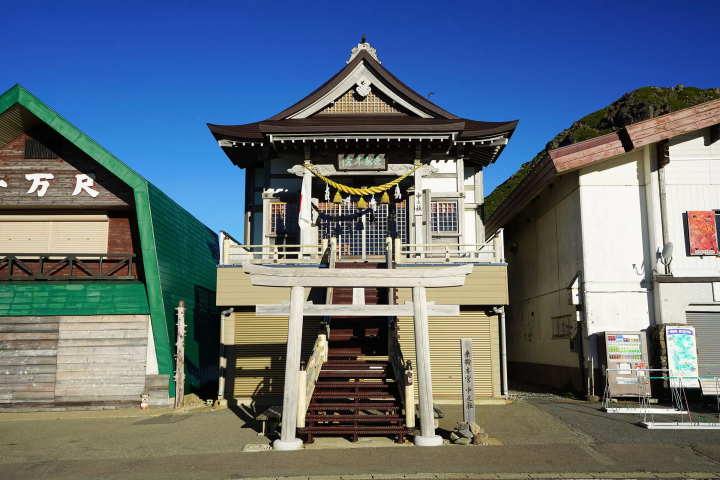
Norikura Hongu Shrine regards the entire Mt. Norikura as its sacred object and has attracted many people's worship since ancient times. There is the main shrine at the top of Kengamine and Nakanosha at Tatamidaira, and they give out goshuin to those who request them. Why not visit and receive a gosyuin?
*If the chief priest is absent due to weather or a shrine event, the shrine will not be able to give out goshuin.
Stay overnight at Mt. Norikura

If you want to enjoy Mt. Norikura to your heart's content, you can stay the night. The starry sky and the divine sunrise are the privileges of those who stay overnight. Be sure to burn this beautiful view into your memory.
There are three accommodation options, which we will introduce to you.
More about Mount Norikura
Opening period: August 20th to October 31st, 2024
For inquiries, please contact Norikura Natural Environment Information Center at 090-8671-3191.
Access to Mount Norikura
How to use the bus
1. Purchase a ticket at Takayama Nohi Bus Center and board the bus
2. Transfer at Honokidaira bus stop
3. Get off at Tatamidaira Bus Terminal
Bus fare
Adults (round trip) 5,700 yen, children half price
Bus travel time
Approximately 1 hour and 40 minutes
Approximately 8 round trips per day (however, reduced service in case of rain)
Hotels near Nohi Bus Center
Access to Hida Takayama
If you want to know more about Hida Takayama
Surrounded by the magnificent nature represented by the Hida Mountains (Northern Alps), Hida Takayama is a town that is alive with history and traditional culture, such as old townscapes that retain traces of the Edo period and Takayama festivals held in spring and autumn. There are also hot springs such as Hida Takayama Onsen and Okuhida Onsenkyo, as well as gourmet food such as Hida beef and Japanese sake. In particular, the Takayama Festival, which is held in spring and autumn, is characterized by a festival procession centered around gorgeous floats (dashi floats), elaborately moving mechanical dolls, and reproductions of picture scrolls, and many people from Japan and abroad come to watch. I will visit. It is about 6 hours from Tokyo and about 4 hours from Osaka. There are some of Japan's leading tourist destinations such as Shirakawa-go, Kamikochi, and Kanazawa in the surrounding area, and you can visit various places around Hida Takayama. There is a mix of various types of accommodations, including Western-style hotels, traditional inns, homely guesthouses, and hostels suitable for long-term stays, and we have the capacity to meet the needs of our users. The people of Hida, who are involved in various fields such as nature, history, tradition, culture, and gastronomy, are simple and warm, and offer heartfelt hospitality to visitors.
The contents on this page may partially contain automatic translation.


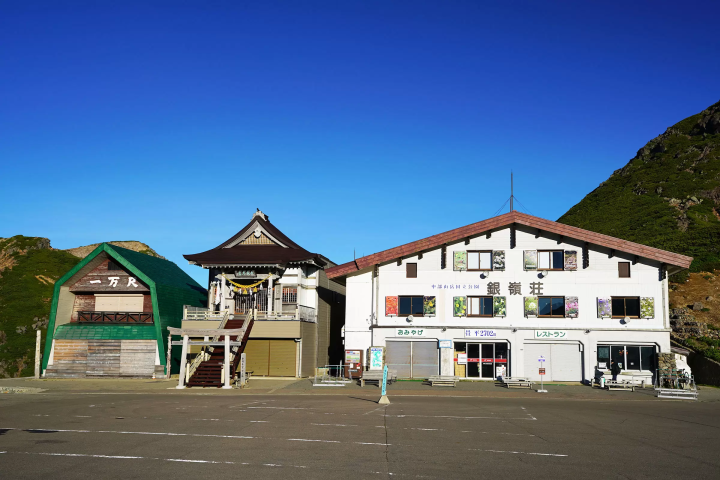
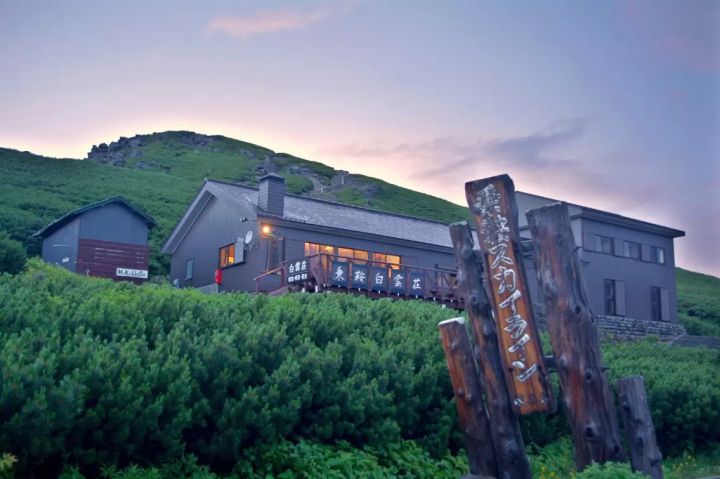
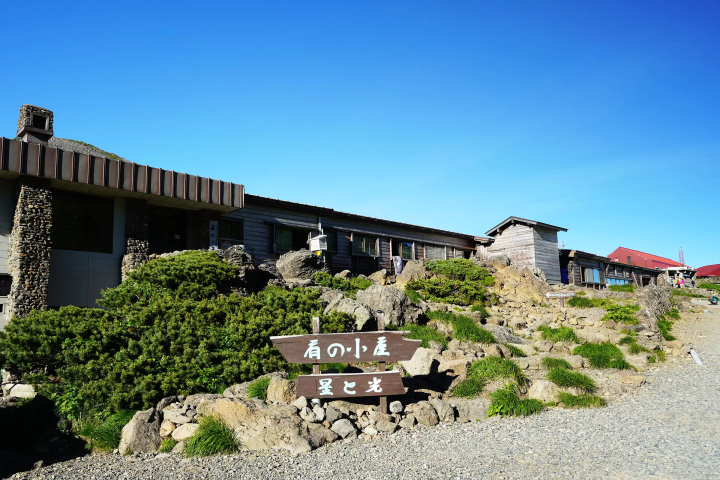

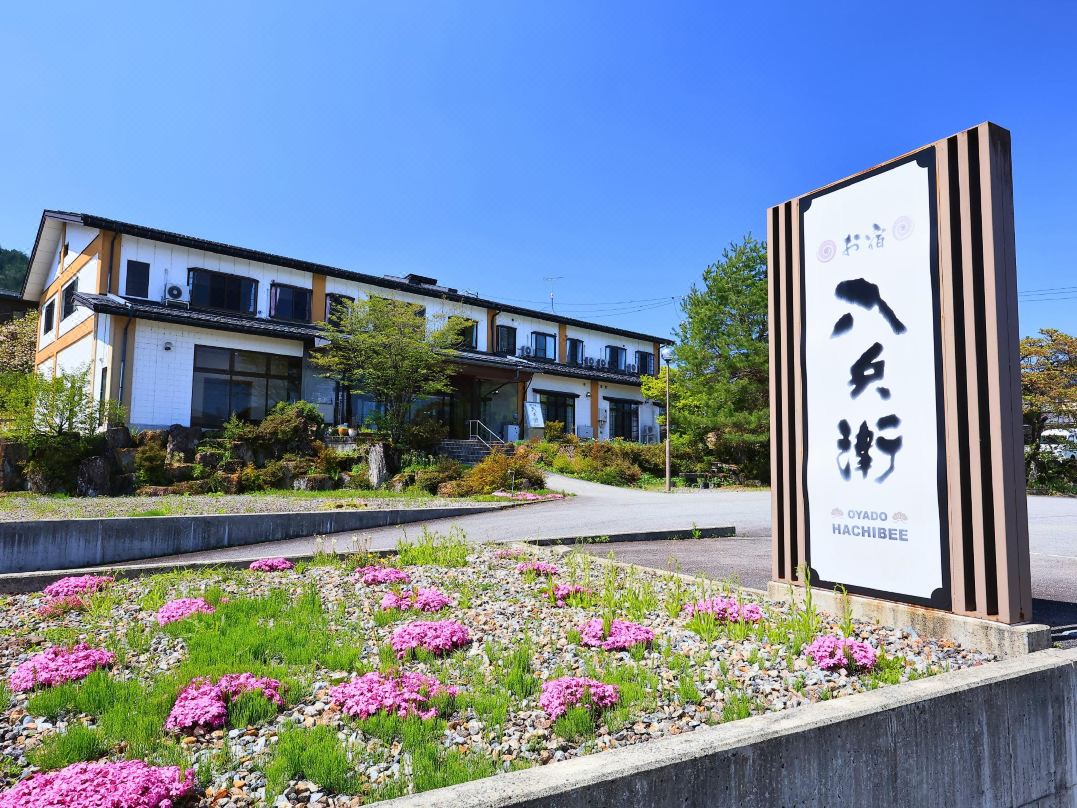


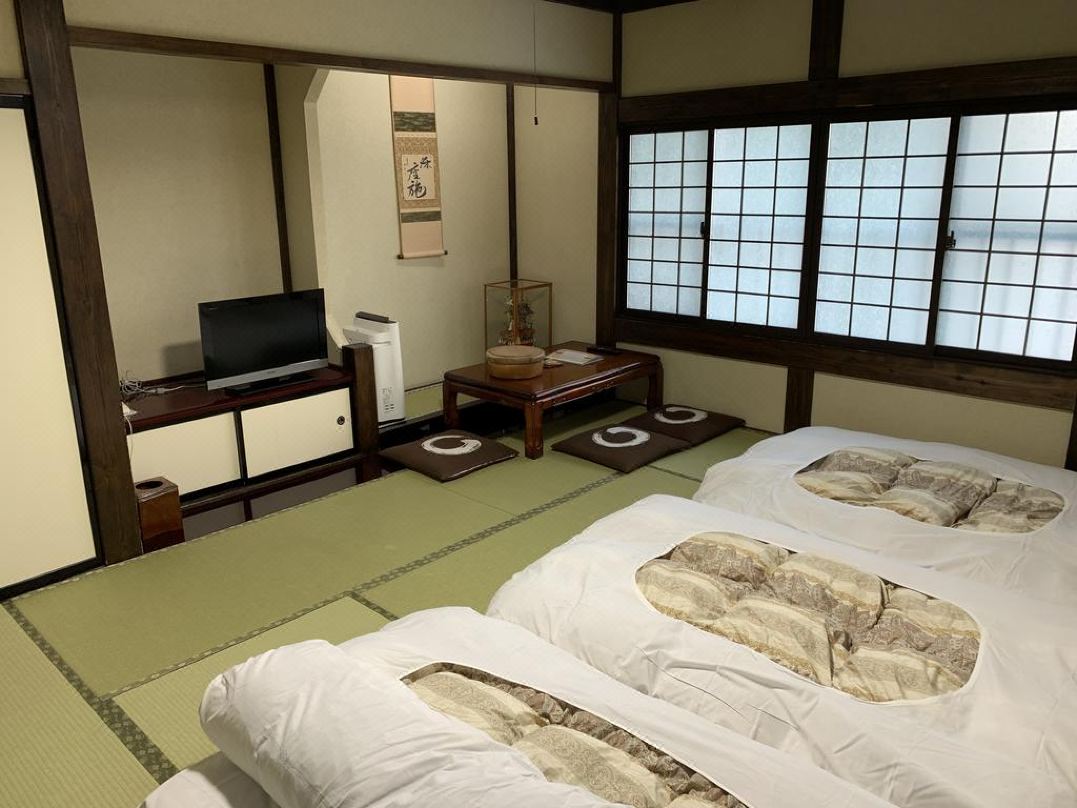

































![[Just a short distance from Nagoya] Popular Taiwanese YouTuber Alan tours Aichi, Tokoname!](https://resources.matcha-jp.com/resize/720x2000/2026/01/08-255181.webp)

